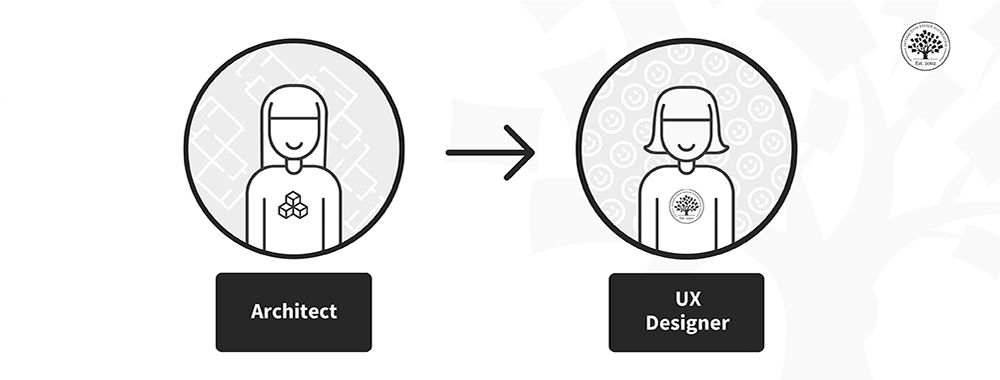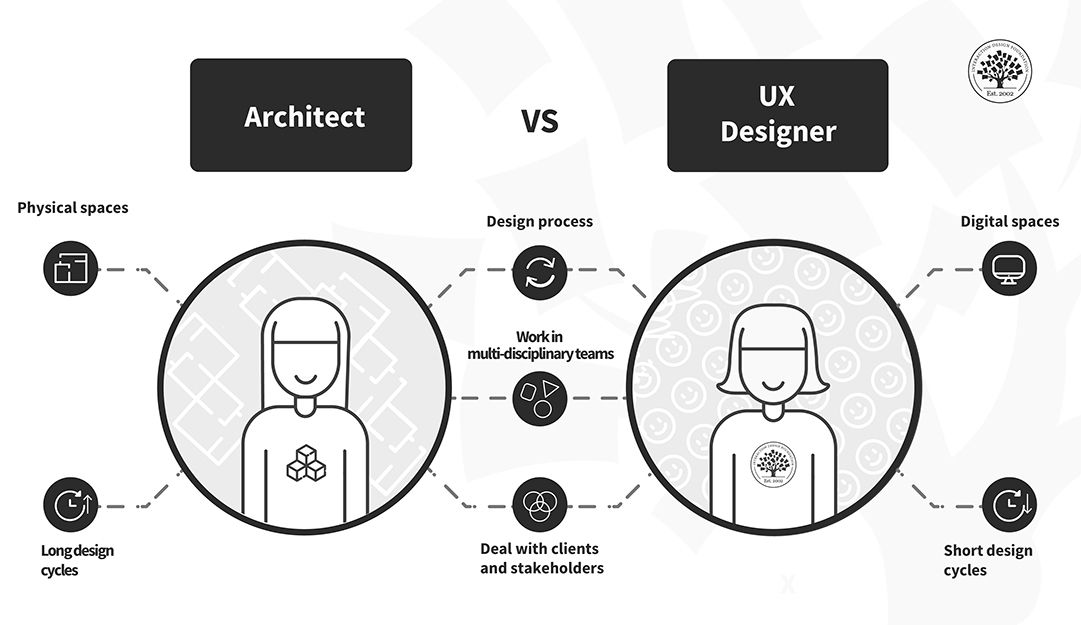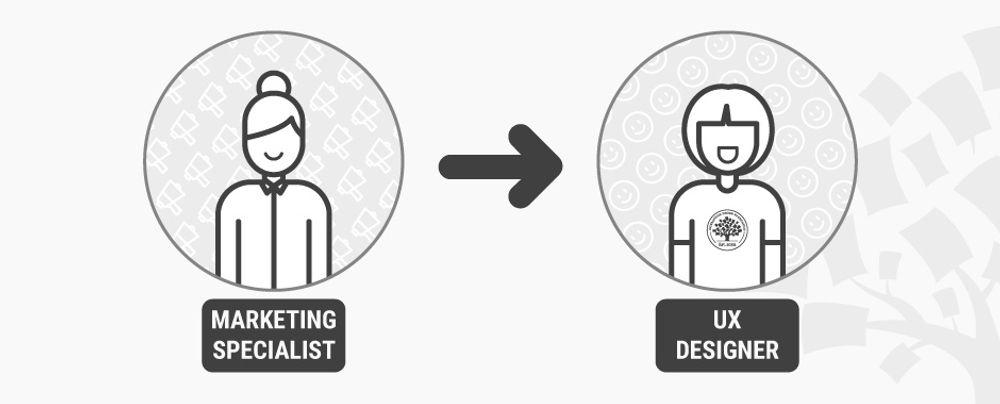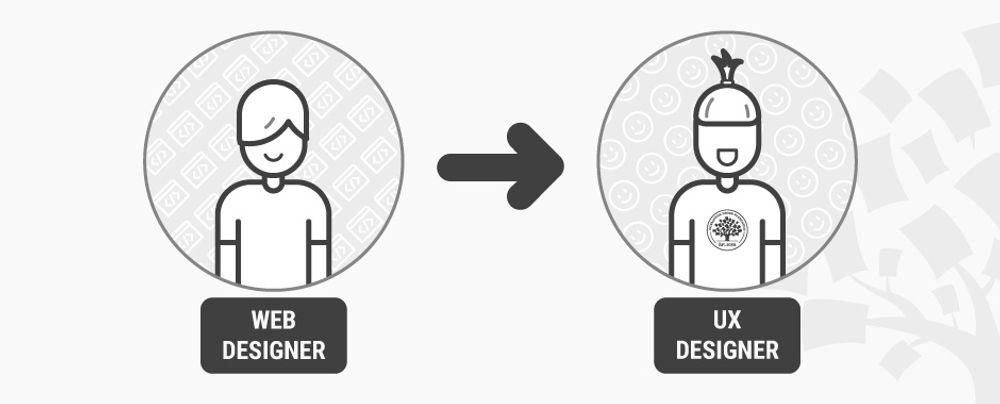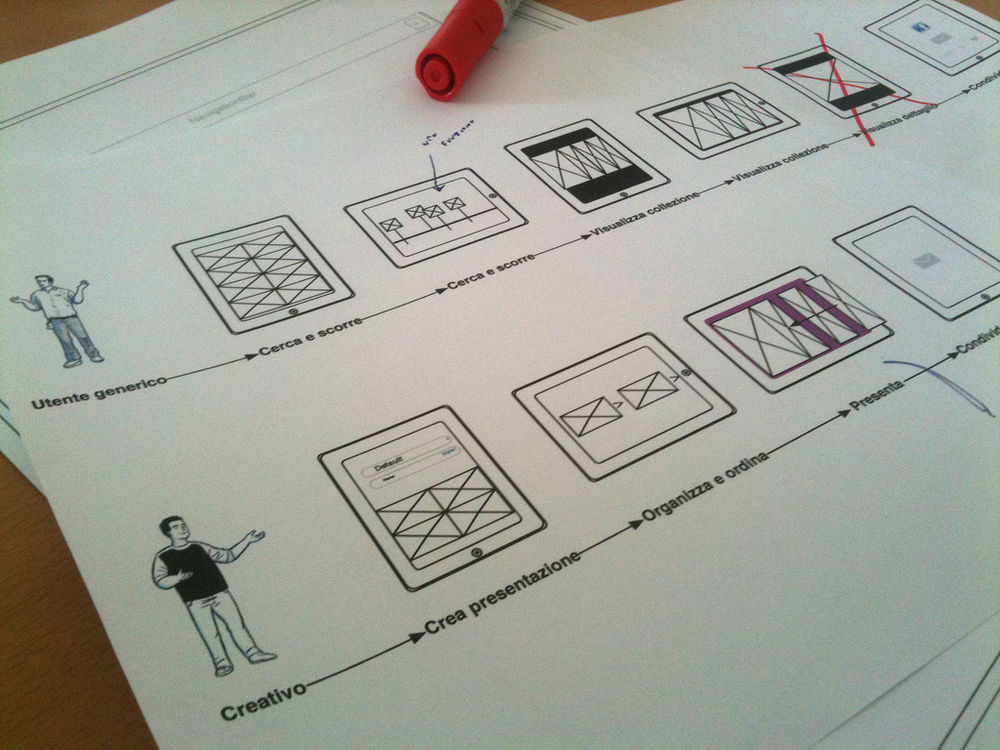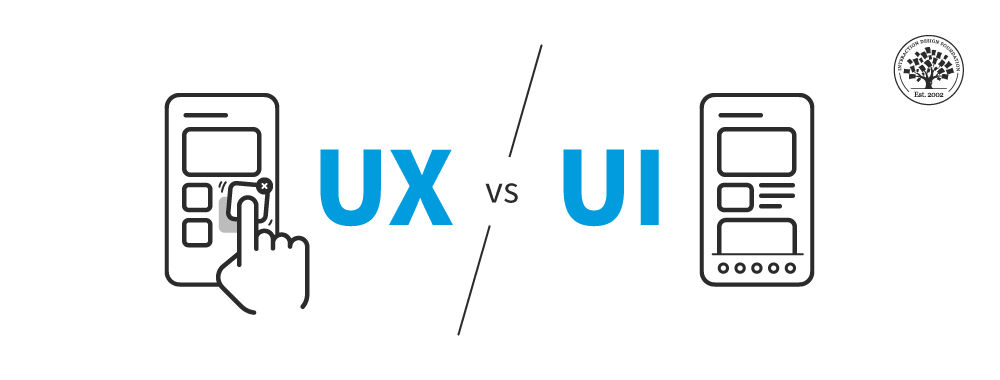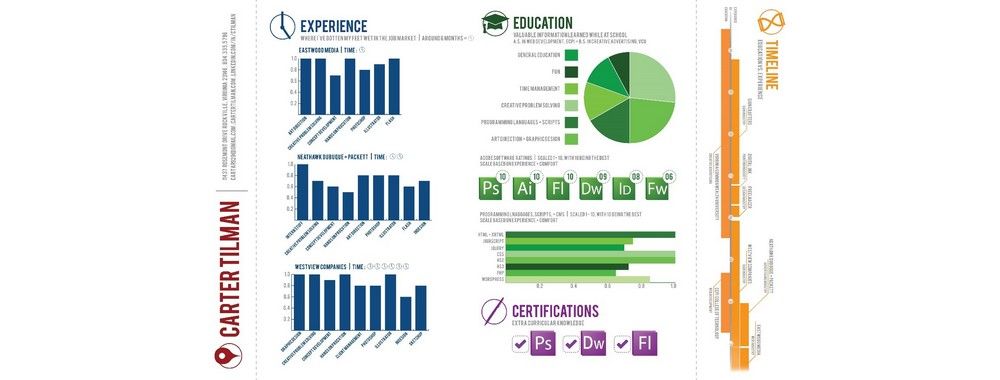Are you an architect, or do you have a degree in architecture, but you feel that architecture may not be the right career path for you? If you’re in search of a new direction, UX design may be the career for you. There are countless paths to get to UX design, and architecture to UX is one of the most popular ones.
In early 2022, we asked UX professionals from around the globe about their journey into UX. Of the 1300+ respondents, 62% said they’d changed their careers. Here are the top ten professions (percentage-wise) from which respondents switched. As you can see, architecture to UX is a common career transition.
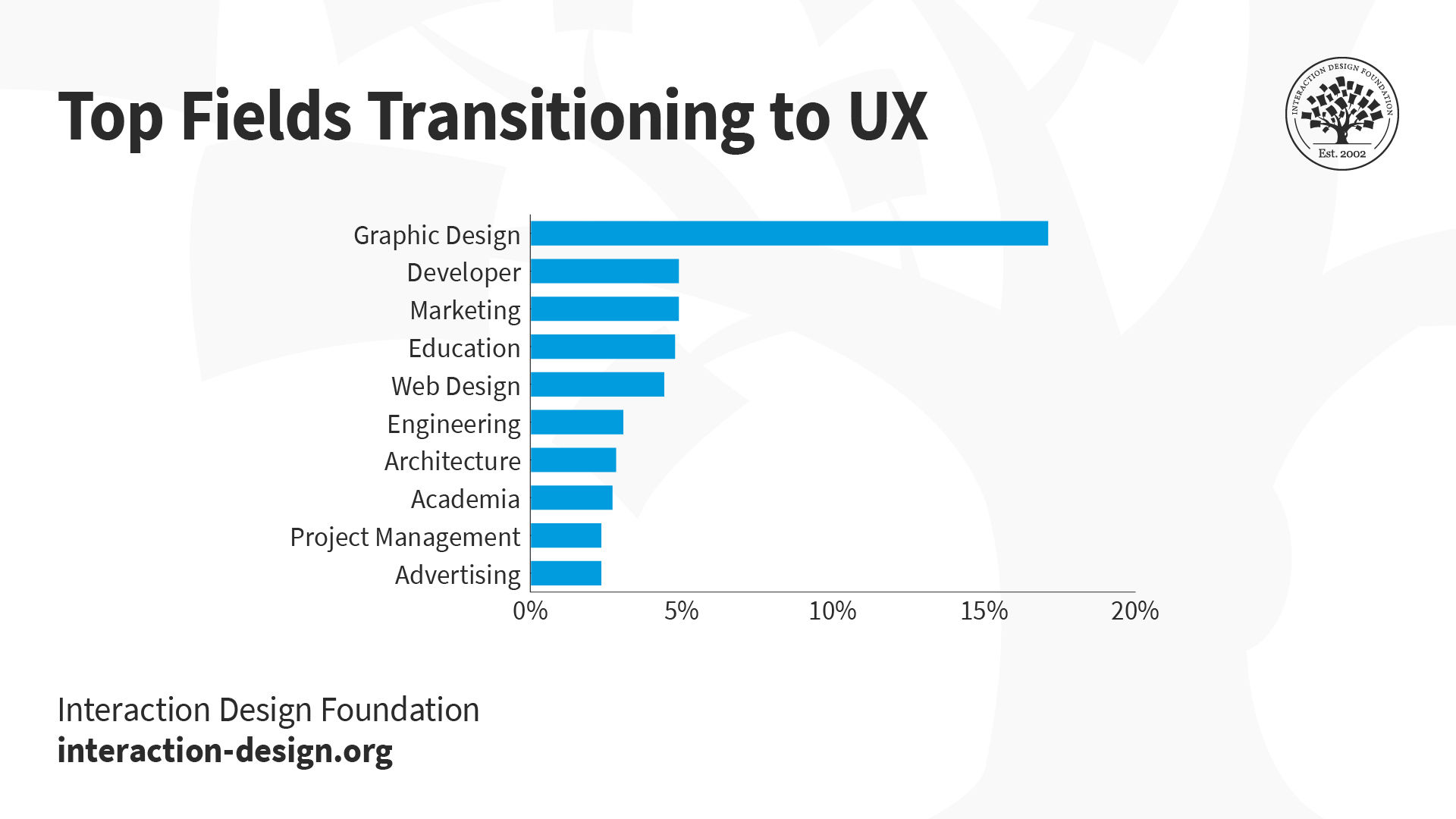
In early 2022, we asked UX professionals from around the globe about their journey into UX. Of the 1300+ respondents, 62% said they’d changed their careers. Here are the top ten professions (percentage-wise) from which respondents switched. As you can see, architecture to UX is a common career transition.
Many architects have switched careers to UX design and found that they have a lot in common. Meet Ibrahim Borba:
“Eventually, I came across the term UX and, as I took a peek into it, I saw a lot of similarities with the architectural field: creative processes; visual deliverables; prototyping; even bibliography. Hence, I decided to take some courses to better understand this world, and maybe, if I’m hooked enough, jump right into it.”
Find Ibrahim’s full review here.
If like Ibrahim, you’re an architect toying with the idea of changing to UX design, you’re in the right place. You’re probably in a far more advantageous position than you realize.
What Is User Experience and User Experience Design?
Show
Hide
video transcript
- Transcript loading…
User experience encompasses everything related to how a user interacts with a product, system or service, from how they feel to what they think about it.
As an architect, it’s likely you're already familiar with UX. Think about your design process—do you take into consideration how people will use or interact with the building and incorporate their needs into your design? If you do, UX is already integral to your design process.
“We must design for the way people behave, not for how we would wish them to behave.”
― Donald A. Norman, Living with Complexity
The job of a UX designer is to create products, systems or services that deliver the best possible experience, considering three primary factors: the look, the feel and the usability of a product.
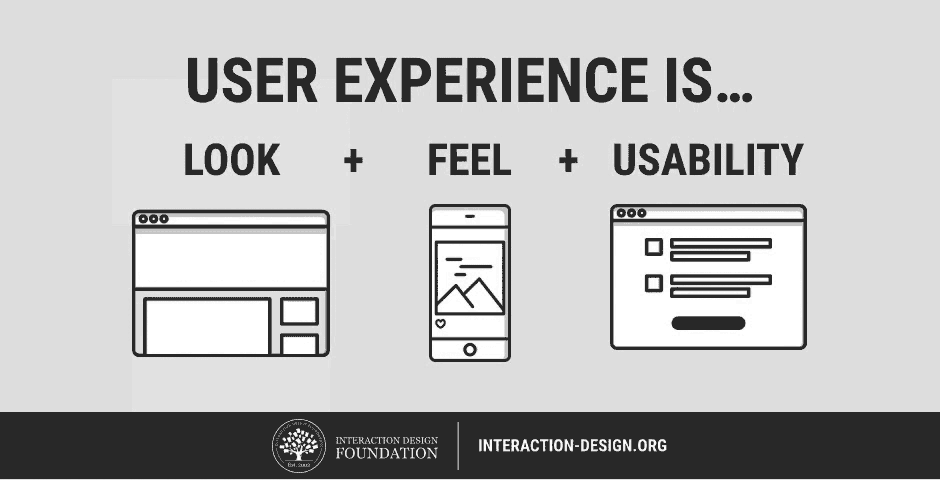
What Do Architecture and UX Design Have in Common?
The Design Process
Architects and UX designers have very similar design processes. Both start with research and a good definition of the problem. Then, you proceed with an ideation or brainstorming phase to generate ideas for possible solutions and select the best ideas to build a prototype; in the case of architects the prototype might be a 3D render or a physical model, and for a UX designer it might a low- or high-fidelity prototype of a feature, app or website. Finally, both architects and UX designers test the prototypes, collect feedback and improve the design accordingly.
As you can see, even though the specific deliverables within the design process may vary between architecture and UX design, the fundamental process and purpose behind each stage are comparable.
Work in Multi-disciplinary Teams
As an architect, you need to collaborate with many people with different backgrounds to make your projects a reality. Multi-disciplinary teams are a must to complete your projects successfully. This is true for UX designers too. To deliver a successful product, you need a multi-disciplinary team, including UX designers, UI designers and developers. We could say that the UX designer could be compared to the project architect, the UI designer to the interior designer and the developer to the engineer.
Dealing with Clients and Stakeholders
The ability to work with clients will serve you well in UX design. Although your design process will focus on the users as a UX designer, you can’t forget about your clients and stakeholders. Ultimately, they’re the project’s initiators, and you have the job of making it happen.
In addition, you know that clients, stakeholders, or even managers might not know about the design process, and thus, you need to translate your work into their language. As an architect, you’ve often had to get feedback or approval from stakeholders. This ability to communicate your projects, facilitate collaboration and put all stakeholders on the same page will serve you well as a UX designer. It will go a long way to ensure the success of your projects.
In this video, Todd Zaki Warfel exposes a real-life example where adapting a digital product presentation to the relevant stakeholder changed the outcome of an important executive decision. Sound familiar?
Show
Hide
video transcript
- Transcript loading…
This video is a part of Todd Zaki Warfel’s Master Class on “Win Clients, Pitches & Approval: Present Your Designs Effectively” (if you’d like to watch the entire Master Class, you can sign up here).
What’s Different between Architecture and UX Design
Physical vs. Digital Spaces
The main difference between architecture and UX design is that the first deals with physical environments, whereas the second deals with digital ones. You’ll need to learn the unique characteristics of digital spaces. However, consider that from the very beginning, digital spaces emulate the physical ones. Think of the trash icon on your computer. Does it resemble a physical bin? Absolutely, especially when it first appeared.
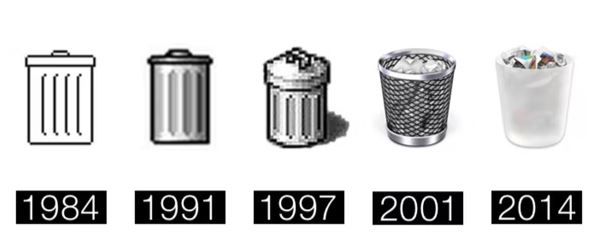
In the digital design realm, Skeuomorphism is a type of design where interface objects mimic their real-world counterparts. Skeuomorphic design helps users understand new features or actions by drawing from their preexisting mental models of the real world. For example, if you see a new icon that resembles an envelope, you’ll instantly think about real-world letters and their purpose. By establishing this connection, users will expect that the envelope icon has something to do with messaging or communicating. This deduction, thanks to the similarity of the icon with a physical object, will speed the user’s understanding of the new feature.
Similarly, your experience as an architect and your knowledge about how people interact with physical spaces will serve you well when dealing with the digital world. Furthermore, as extended reality (XR) technologies become more common, the barrier between the digital and physical world will continue to blur, and your experience with physical spaces will be even more valuable.
The Duration of the Design Cycle
In architecture, the design cycle is typically very long. The duration of each design cycle will depend on the project's magnitude, but it will typically span several months or even years. This fact can make you feel disconnected from the result, or depending on your personality, and it might even make you feel less creative. On the contrary, UX design in general has much quicker design cycles, going from weeks to months in the majority of cases.
If you’re feeling disillusioned about long design cycles, UX design may offer the stimulation you’re lacking.
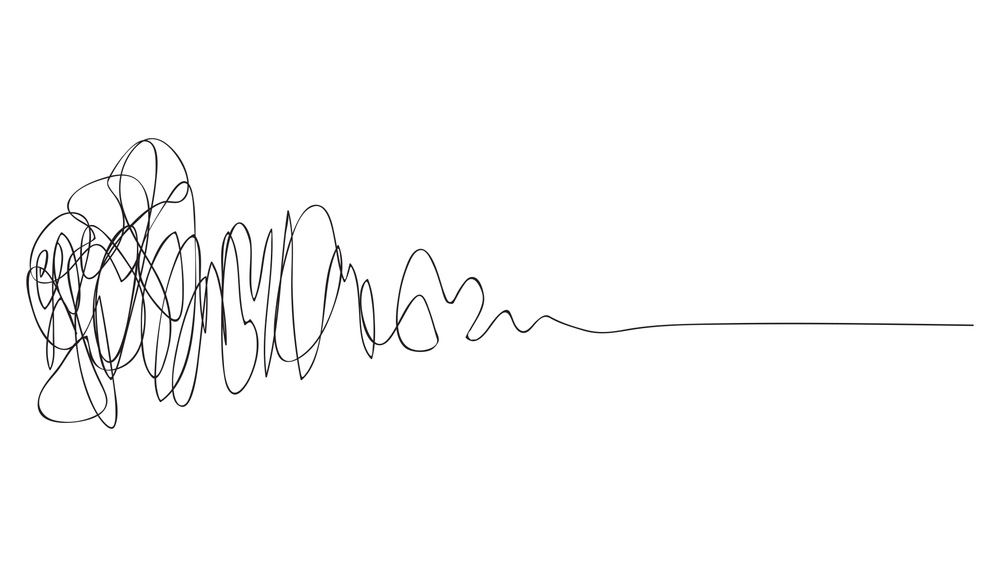
The design process isn’t a straight line. It’s a messy squiggly process that you must endure to gain clarity about the right problems to work with.
In UX you’ll need to embrace the so-called design squiggle. As an architect dealing with physical projects, you already iterate your designs to a certain extent. However, as a UX designer, your process will probably involve many more iterations, which may require some getting used to. Nothing is set in stone in digital projects, and with every iteration, you’ll learn something new and tweak what you already had.
The Big Benefit of Architecture Experience in UX Design
Balancing Aesthetics and Functionality
Aesthetics play a significant role in architecture and also in digital design. However, if you design a breathtaking dance studio full of columns and the dance students can’t move without bumping into a column, no one will be able to use the studio, and the project will fail. As an architect, you have to balance aesthetics and functionality on a daily basis.
The same phenomenon happens in digital products, where aesthetics and visual design are paramount. A superb visual design is essential to gaining the trust of your users. However, if you design a very visually appealing app, but your users can’t figure out how to interact with it, they’ll never use it again.
Your ability to successfully balance aesthetics and functionality will be one of the most significant benefits you’ll have as an architect moving to UX design.
Balancing User Needs with Business Needs
As you already know, design affects the bottom line. Although you’ll need to get used to UX design-specific key performance indicators (KPIs), you’re already familiar with the importance of business needs in your design projects.
Balancing your user's needs with the business needs is one of the trickiest parts of the job. As an architect, you already know that innovative designs that solve people's problems are valuable only if they are feasible and functional. You know how to adapt your design to the circumstances and budget available and incorporate business needs with the user’s needs in your design process.
Architects are used to looking at the big picture, and this ability will undoubtedly give you an edge as a UX designer.
The Take Away
As an architect, a big part of your job already revolves around creating great user experiences. There is a lot of common ground between architecture and UX design, and many of your skills will transfer seamlessly to a career in UX. Your knowledge of the design process and its iterative nature, your ability to balance aesthetics and functionality, and your understanding of the big picture will prove invaluable in becoming a UX designer.
Your challenge will be to apply your existing skills to design digital environments. However, approaching digital design projects through the physical dimension will give you a unique perspective that can be very helpful in a UX team.
If you’d like to become a UX designer but are still a bit hesitant, you can start by contacting people who have already made this career switch before and enrolling in a self-paced online course. Once you become more familiar with the UX world, you’ll see the many ways you can leverage your background in architecture to become an outstanding UX designer.
Where to Learn More
Online Courses
The Interaction Design Foundation (IxDF)
With over 130,000 members (and counting), we’re proud to share that the Interaction Design Foundation is the world’s largest specialist design education community. According to Forbes Magazine, the IxDF provides an Ivy League-level of UX design education, and Don Norman referred to the IxDF as:
“A goldmine of information on interaction design”
— Don Norman, co-founder and Principal Emeritus of Nielsen Norman Group
Apart from the courses suggested in the learning path, we offer and master classes to help you further develop your skills in UX design.
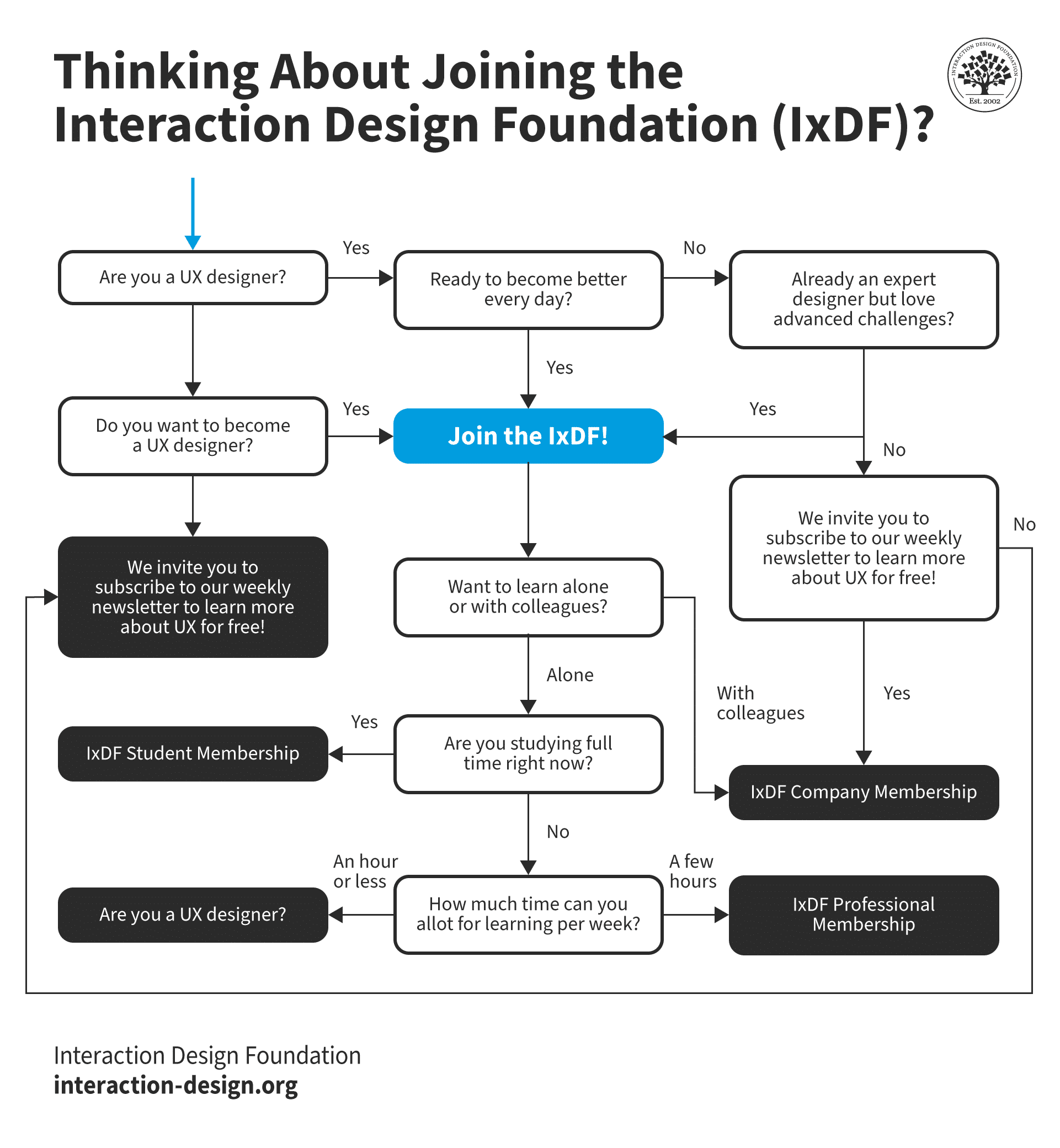
If you’re thinking about joining the IxDF, but don’t know where to start, follow this flowchart to find out which learning style might suit you best.
We take care to keep the courses updated and work towards adding more relevant topics so that you get the benefit of the latest research and methods. The best part about our platform: for a low annual membership fee, you get access to all of our courses for a year with no additional charges, along with access to our community.
Many people have used IxDF education to switch from architecture to UX. Daniel Figueiredo joined IxDF to solidify his career switch from architecture to UX design:
“This was not an easy decision. I was an architect and urban planner, both as a student and professional, for 8 years. The stress of starting over in another gigantic and complex field is not something taken lightly. [...] You’ll have to rebuild a vision for yourself; it’s humbling and prideful at the same time.”
Read Daniel’s full review here.
Coursera
Coursera is another platform that offers courses on various subjects, including UX. Developed by a consortium of universities, the courses are of high quality. However, the fees for individual courses vary, and the courses tend to be offered at most once or twice a year, which may or may not suit your learning goals. If you’re not sure what platform might be better for you, find here a comparison between the Google UX design course on Coursera and IxDF courses.
Udemy
Udemy is the world’s largest marketplace for training. You can find thousands of courses across a wide range of topics. This extensive catalog comes from the community on the platform, which enables anyone to publish and sell a course. Unfortunately, as Udemy doesn’t design its courses, the quality of the courses can vary significantly from one to the next. Along with good courses, there are also several poor ones, and you’ll need to be wary of which course to purchase.
CareerFoundry
The CareerFoundry Bootcamp is one program, split into three courses: Intro to UX Design, UX Design Immersion and Specialization. You can either specialize in UX design, UI design or web development. CareerFoundry also offers courses in web development, UX design, UI design, and data analytics. However, CareerFoundry's UX Design course might be a bit steep in comparison with other online courses, and it has a fixed duration of 10 months (15-20 hours per week).
Classroom Courses
Nielsen Norman Group
If you prefer to learn in a classroom than learn online, you may want to visit the Nielsen Norman Group. The group has an excellent reputation and is one of the world’s most respected UX consultancies. Their certifications are based on attending conferences. However, the certifications are expensive. The location and timing of the live conferences can also become a challenge if they are not near you.
General Assembly
General Assembly offers immersive bootcamps in several disciplines, including UX design, both full-time and part-time. As with any classroom-based training, the price of their courses is steep. They also have a limited number of locations for you to physically attend the bootcamps, which may add to the cost of your education, should you need to travel.
University Courses
As you’re a working professional, we would not recommend that you take three or four years off to go back to university (and potentially take on debt). Moreover, most universities bundle UX with other disciplines and do not offer it in standalone courses. However, if you do wish to take a break, or have a specific learning path in mind which only a university course can fulfill, then here are some examples of what to expect in terms of curriculum and costs:
Carnegie Mellon – HCI Programs
York University – MSc in HCI Technologies
Given the significant investment in time as well as money (and perhaps relocation), you’ll want to research various options to identify the most suitable university and course. Find here an extensive list of UX-related Bachelor & Master Degrees.
To opt for a university education or not is an overwhelming decision. Make sure to check out our piece on Return on Investment of different design education approaches here, which may help you make a more informed decision.
Images
© Laia Tremosa and Interaction Design Foundation, CC BY-SA 3.0
